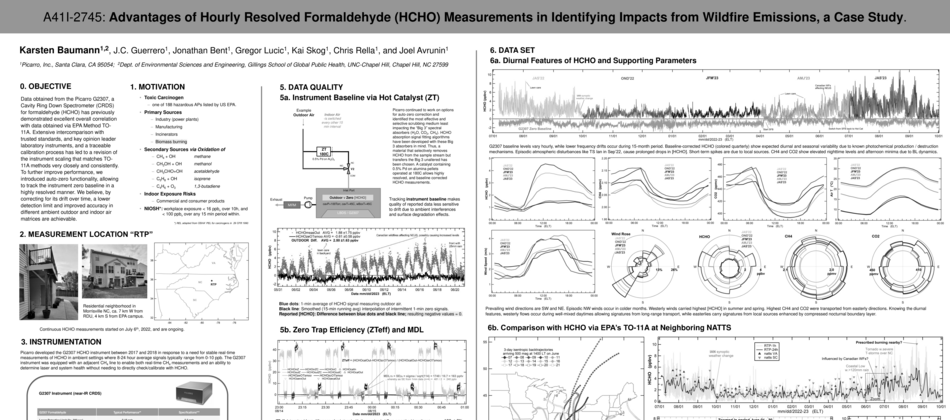
This poster highlights a case study on the impacts of wildfire emissions in Canada on the Carolinas and Virginia. It features some really interesting findings comparing the Picarro G2307’s formaldehyde measurements to those from the EPA National Air Toxics Trends Station (NATTS) Network. It shows that by correcting for drift over time, a lower detection limit and improved accuracy in different ambient outdoor and indoor air matrices are achievable with G2307. Its ability to deliver high-resolution data can provide valuable information about acute exposure risks during potentially harmful periods that are impacted by wildfire or other biomass burning emissions.
